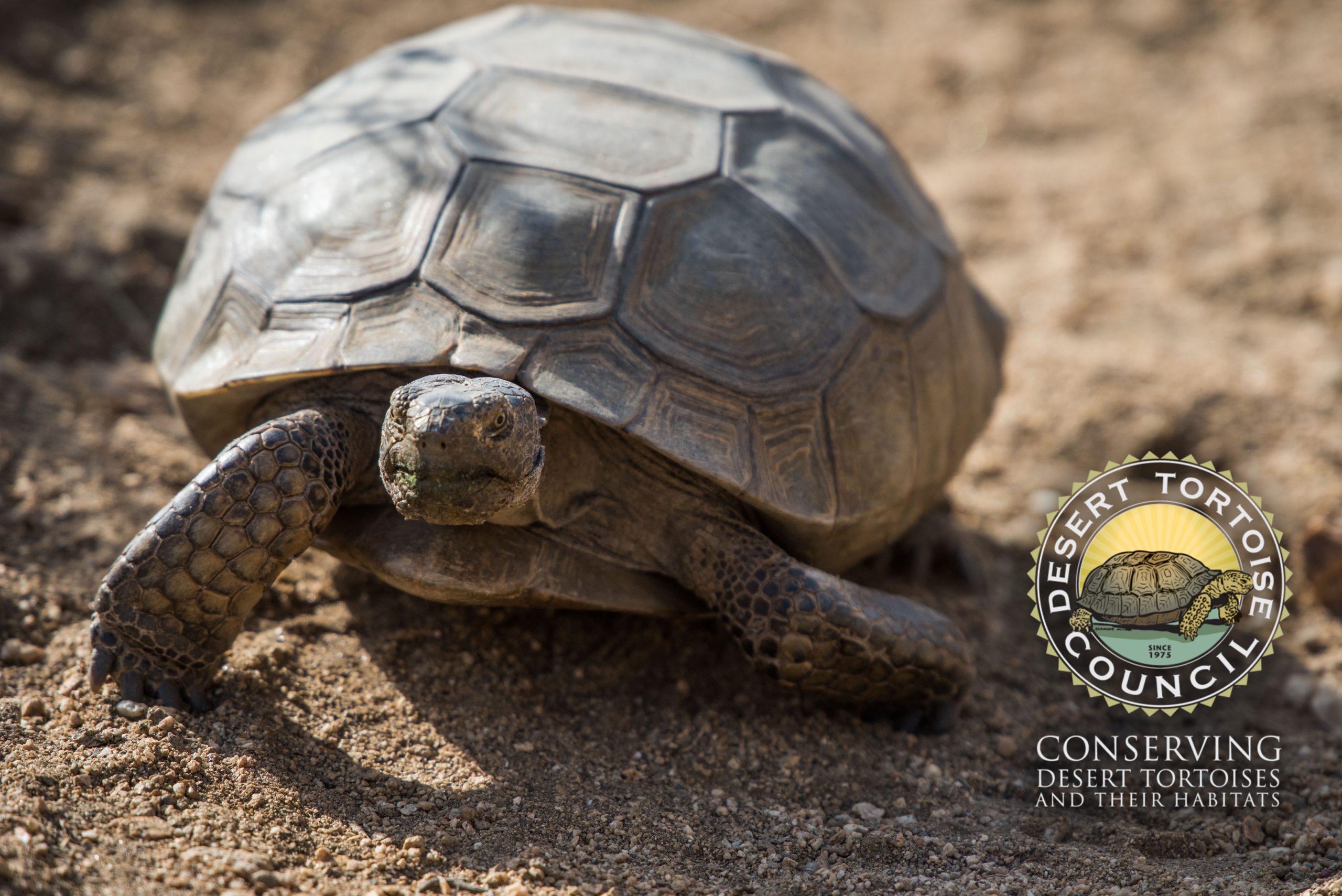If your profession, or your vocation, as an ecologist brings you to the tattered edges of human encroachments threading into the Mojave desert, you may find yourself on the front lines of conflict between ecosystem preservation versus development. To a lot of people these areas may look like “just desert.” But the dry landscape is actually full of life — as you know — and deserving of protection. It’s a fragile landscape.
The friendly face of conservation is the Mojave desert tortoise is, an oft-described “charismatic” creature whose numbers have fallen by up to 90% over the past 40 years.
Where once tortoises were plentiful, they are now scarce. They are listed as “threatened” under the United States federal Endangered Species Act and considered “vulnerable” by the International Union for Conservation of Nature (IUCN).
Mojave desert tortoises (Gopherus agassizii) are protected by law to the extent that it’s illegal to even touch one without a permit. And if tortoises are found living where a development project is planned, such as a solar or wind farm, a pipeline, or a housing development, a host of science-based research and mitigation measures must be undertaken to study, understand, and to then move these creatures out of harm’s way.
To support this, there’s an entire industry set up to manage tortoise populations. At the center of the action is the Desert Tortoise Council, a brain trust of biologists, ecologists, and conservationists who have been training people for 30 years to help protect these tortoises.
In other words, if you want a boot camp toward becoming qualified to help manage and handle the Mojave desert tortoise (one of three related species found in the Southwest and Mexico) then the DTC’s annual two-day training session is for you. You’ll get direct training, along with Q&A, from some of the top tortoise experts in the world — people who have devoted their lives and careers to these animals.
I finished the training with a solid understanding of the current science and research, a knowledge of what’s in the field such as tortoise health and habitat, and all the state and federal regulations that govern now this protected animal is managed.
What impressed me most was the sense of community that pervaded the sessions. It’s a close-knit group, and the attendees in their own right were extremely passionate and knowledgeable. All of this translated very well through the digital experience. How much better would it be in-person? Hopefully the future the event will return to a flesh-and-blood format, where the dynamics of socializing in real-time can work their magic.
The Desert Tortoise Council’s next event is a symposium in February, multiple sessions on focused topics including the current state of research, field studies, and other findings. Registration is now open!

